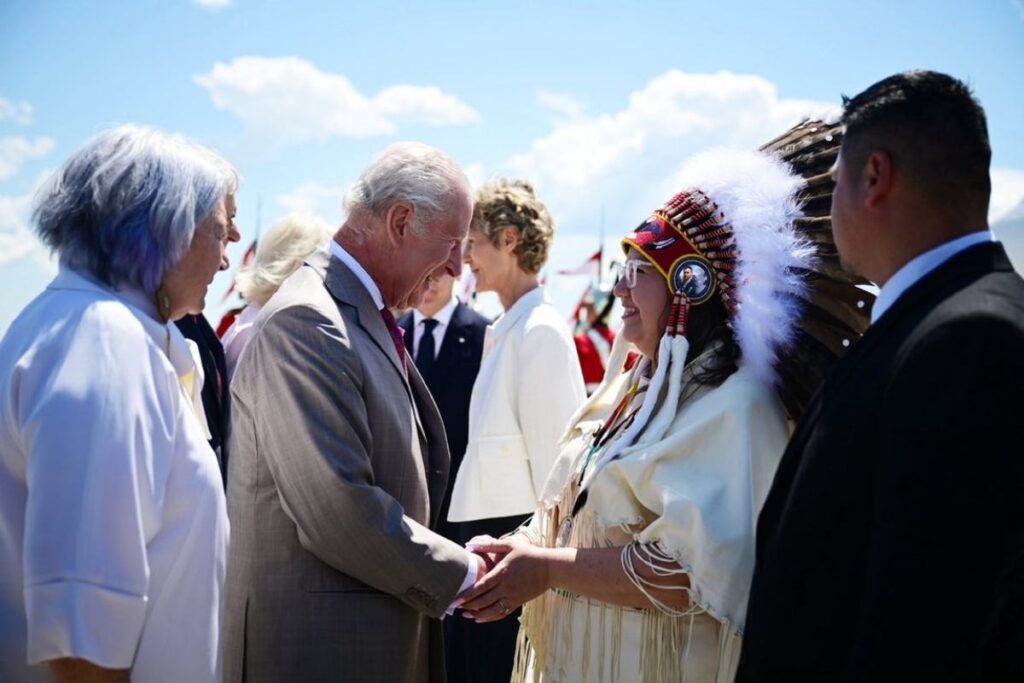Canada is not for sale!
This seemed to be the central message of King Charles and Queen Camilla’s May 2025 visit to the North American nation amid sovereignty battle with its neighbor, the United States. But the indigenous people of Canada view the visit as a hypocritical display of solidarity.
Since early 2025, Canada has been locked in a war of words with the United States. The spat resulted from provocative utterances made by U.S. President Donald Trump. Trump had on several occasions touted the idea of making Canada the 51st state of the United States.
Canadians reacted angrily to the taunt and united in defense of their sovereignty. The Canadian government, through its then-Prime Minister Justin Trudeau, initially called the comments a “distraction.” But he later made a U-turn after acknowledging that the statement was a “real thing.”
Soon after, a tariff war broke out between the two nations. Trump was the first to fire a shot, announcing punitive tariffs on most Canadian goods. Canada responded with its own tariffs, sparking a battle of supremacy and sovereignty with its biggest regional ally.
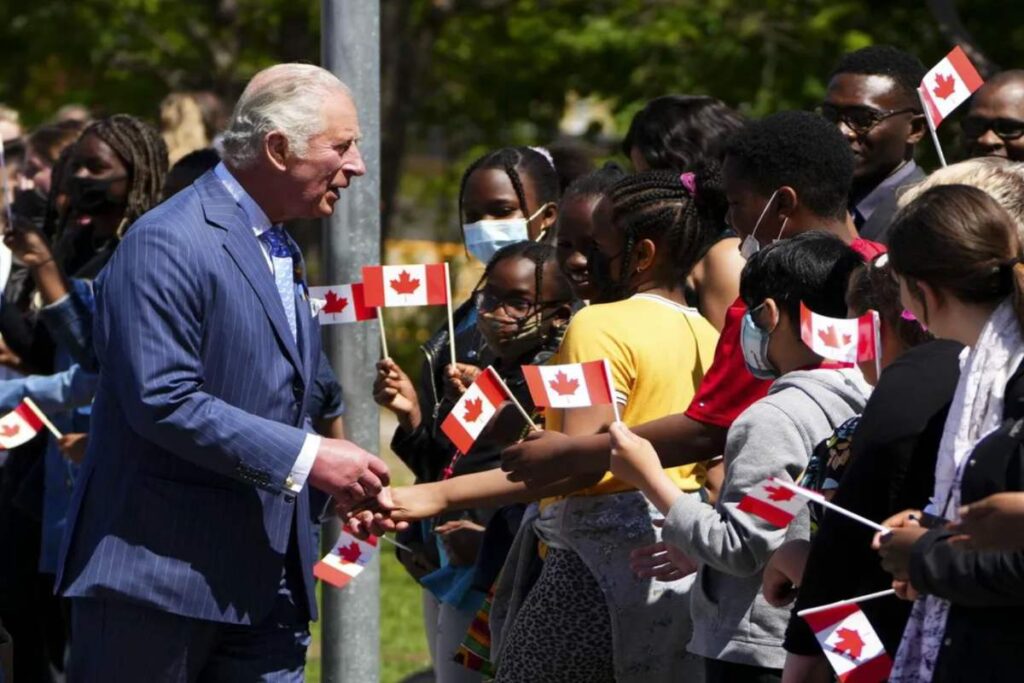
King Charles and Queen Camilla’s visit was a timely show of support to the Canadian government. It was welcomed by the Canadian people, who see it as a boost to their continuous outrage over Trump’s comments. But the indigenous people of Canada do not share the same excitement. We are about to see why.
A Royal Visit and a Strong Statement to Donald Trump
On May 26, 2025, Canadians were excited to welcome King Charles III and Queen Camilla to their shores. It was the King’s first ever visit to the former North American colony of Britain after he ascended the throne.
But it wasn’t his first time in the country. He had been to the Great White North 19 times before. This time it was significantly different. It was a 2-day working visit at the invitation of the Canadian Prime Minister, Mark Carney.
Canada is an independent state under a constitutional monarchy. Carney wanted the United States government and Donald Trump to remember that.
King Charles set foot on Canadian soil at about 1:15 p.m. ET on Monday, May 26. As their Royal Canadian Air Force plane landed at Ottawa’s Macdonald-Cartier International Airport, high-profile personalities had lined up to treat them to a warm welcome.
The first Canadians to greet the royal couple were Governor General Mary Simon, the representative of the British throne in Canada, the Lieutenant Governor of Ontario Edith Dumont, and, of course, Prime Minister Mark Carney.
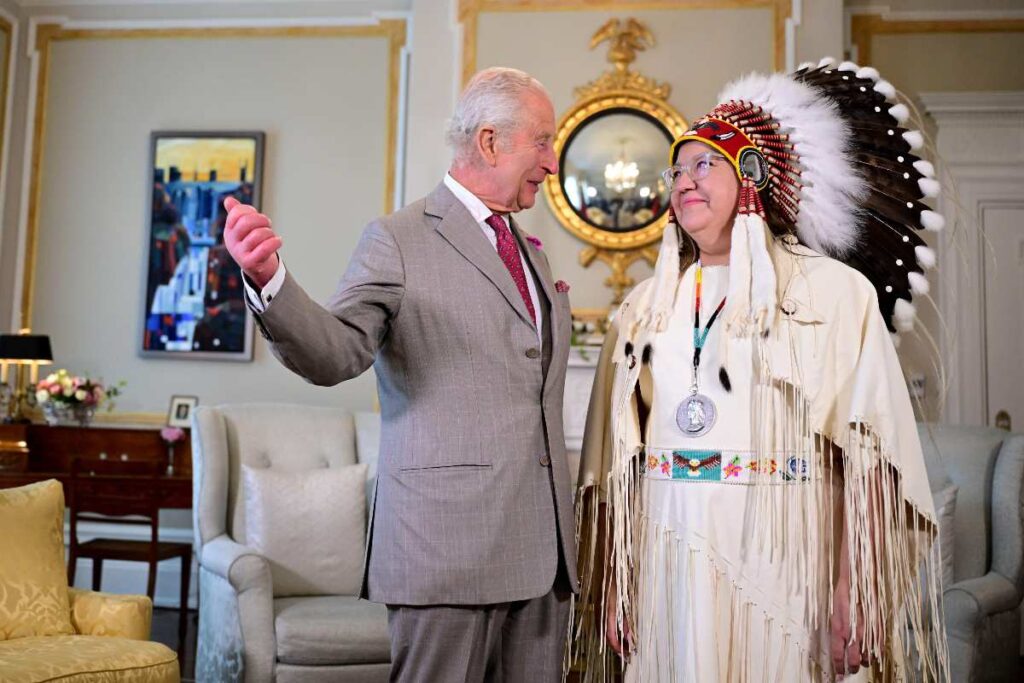
Leaders of the indigenous peoples of Canada were also on the ground, each beaming with smiles as they shook hands with the couple. Also, the 25-member honor guard from the Royal Canadian Dragoons and the band of the Canadian Armed Forces were present.
The Controversial Royal Speech and the Indigenous People
The visit, which was Queen Camilla’s 6th, was full of iconic activities. The King was scheduled to give the first royal speech from the British throne since 1977. King Charles delivered the speech on Tuesday in the Senate chamber.
The speech, compiled by the Canadian government, highlighted the country’s immense potential. The 25-minute speech also referred to Canada as “strong and free.” This was regarded by many to be a direct response to Trump’s taunts and threats to annex the country.
But amid the speech was the big elephant in the room, the Crown’s soured relationship with the indigenous people. A small portion of the address only spoke about commitments to reconcile with the indigenous people. But it was too weak to quench the raging unrest.
For centuries, the indigenous people have agitated for restitution for colonial oppression and marginalization. Although the speech and the visit sent a potent message and furthered the cause of national sovereignty, it also unearthed the country’s ironic and unpleasant colonial legacy.
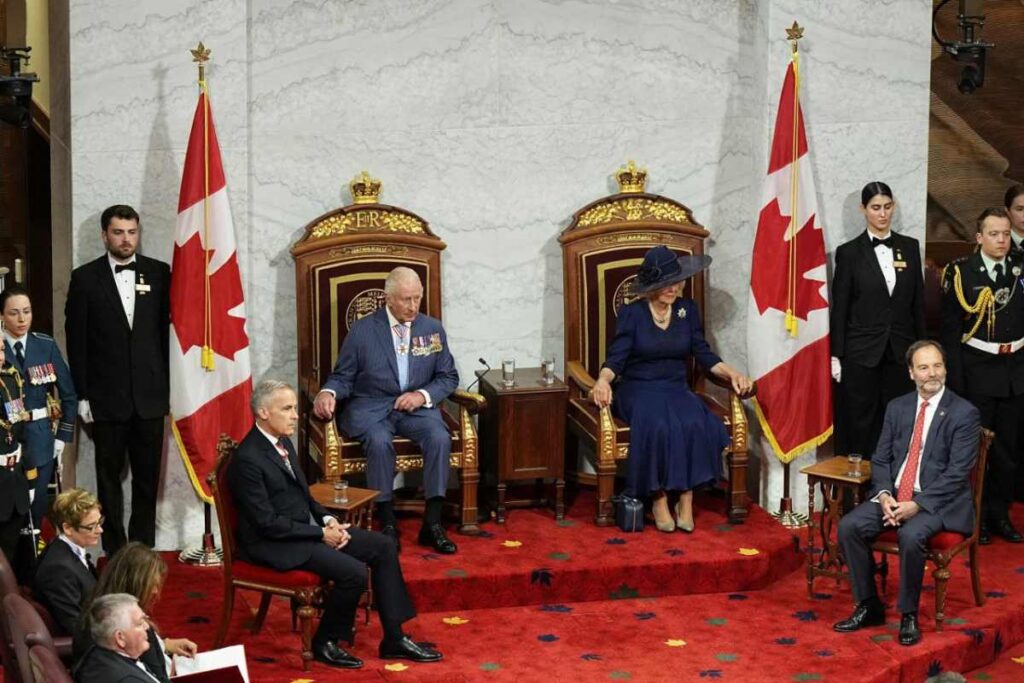
While the Prime Minister tried to project the Crown as a symbol of pride and strength, the indigenous people viewed it as a symbol of oppression. It all began in the 18th century when the British gained control over Canada.
The Indigenous Peoples of Canada and Centuries of Unfulfilled Promises
Over 200 years ago, the British won the Seven Years’ War over their arch-enemy, France. Following the victory came the historic speech, known as the Royal Proclamation of 1763.
Given by King George III on October 7, 1763, it was aimed at calming the tension of the people in the newly conquered territories, which include present-day Canada. It outlined a policy of engagement and land ownership and use between the British and the indigenous population of the former French colonies.
The proclamation protected the ownership and use of land by the indigenous people. It also regulated the movement of colonial settlers and trade with the native population. Lastly, it spelled out the new governance system and structure.
This diplomatic masterpiece came after violent clashes between the British and the indigenous people who were scared of losing their lands. The proclamation ended the hundreds of deaths that were mostly recorded on the indigenous side.
However, as the decades passed, the colonial masters continued to draw back from the proclamation. This has resulted in a series of agitations and agreements that have yet to yield satisfactory outcomes to date.
Indigenous peoples have repeatedly lamented the growing number of unresolved land claims and treaty violations that have taken place over the centuries. They want the Crown to address these decades-old injustices. King Charles III’s visit was a golden opportunity to air their complaints.
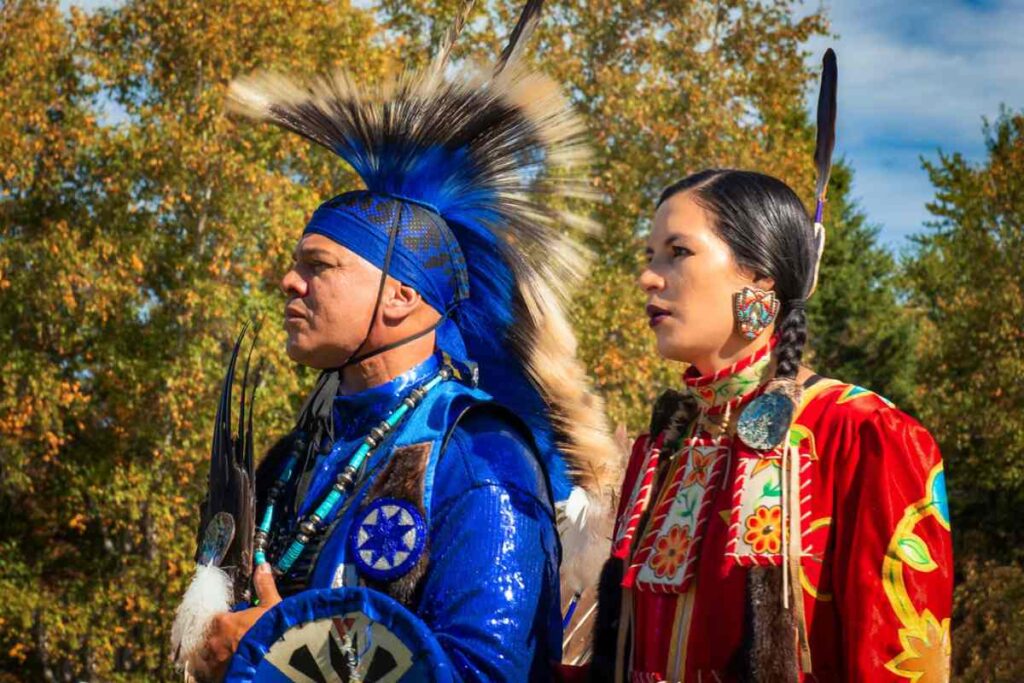
However, what seemed likely to become a fruitful engagement for the indigenous leaders soon turned into a major disappointment. The first sign was the denial of their request for a private audience with the King.
“Not Our King”
Thereafter, the leaders mobilized their people for public protests. Cries of “Not our King” rent the air during the King’s stay. Indigenous leaders from Alberta, Manitoba, and Saskatchewan complained about the “backslide in reconciliation.”
Even more frustrating was the Crown’s reluctance to seize the golden opportunity to right the wrongs of the past. The leaders began to criticize the throne speech, the tree-planting exercises, and other image laundering activities of the visit.
The indigenous peoples, in their criticism, recalled how previous royal visits had followed the same pattern of disregard for the native dwellers. One of the incidents that came up was Queen Camilla’s previous visit during which she scoffed at some symbols of indigenous culture.
Aside from land restitution and treaty rights, the indigenous people have several other pressing demands. These include reparations for genocide as recommended in the Truth and Reconciliation Commission’s recommendation, especially killings that took place at former school sites.

Indigenous people are also clamoring for greater sovereignty and self-governance. They are requesting access to clean water and infrastructure, as well as the eradication of economic and social discrimination.
A History of Colonial Neglect and Disrespect
Aside from the allegations of Queen Camilla mocking indigenous cultural expressions, critical voices have recalled other instances of disrespect by the Crown. One example took place in 2017 during Prince Charles and Camilla’s Canada 150 tour in Nunavut.
It was said that the royal couple looked uninterested during the Inuit throat-singing display. The indigenous people took this as a sign of disregard and proof that the royal couple despised their culture.
Another instance occurred in 2002 during Queen Elizabeth II’s visit to British Columbia. There, indigenous groups drew her attention to the genocide at the residential schools. This had been confirmed following the discovery of unmarked graves close to the schools’ locations in 2021.
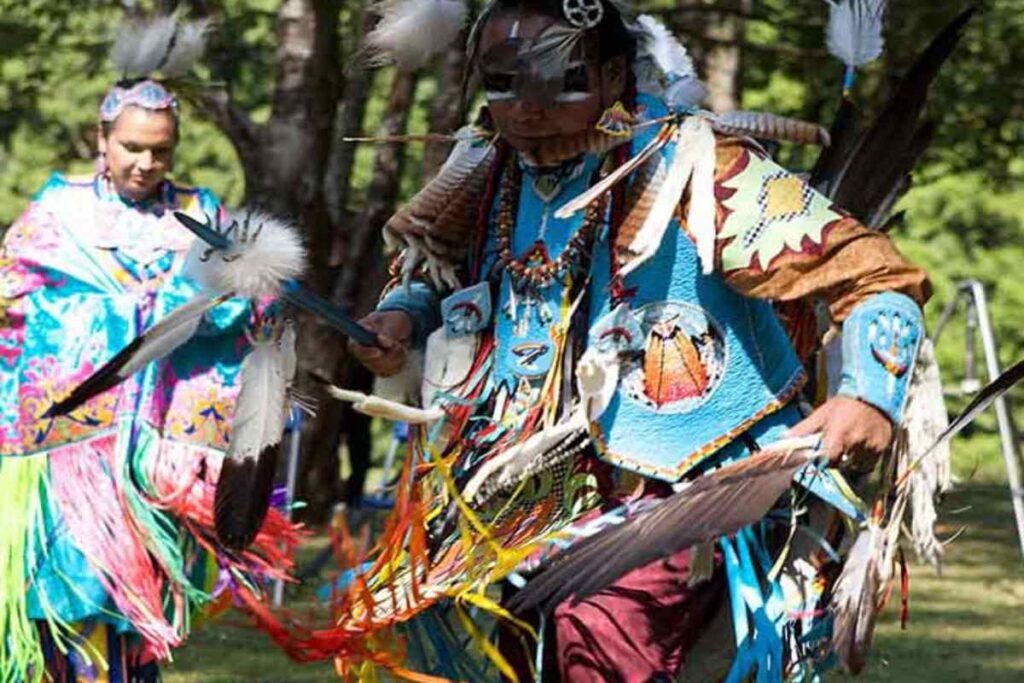
The indigenous people were shocked when, instead of an apology from the Queen, they got a weak acknowledgment of the incidents. The Queen briefly alluded to the incidents and merely branded them as “difficult aspects” of history.
Prince Charles was accused of the same thing in 2022 during his visit to Labrador and Newfoundland. In his speech, he declined to address the problems or offer solutions. He also refused to make any commitments to compensation or restitution.
Lastly, just like the 2025 visit, Prince Charles refused to meet with indigenous groups. He shunned the request of their leaders for a meeting on treaty rights. Instead, his itinerary concentrated on ceremonial activities.
With the 2025 visit now behind us, another generation of the indigenous population will have to wait for another opportunity. While a section of Canadians applaud the royal family’s show of support against U.S. hostility, for the indigenous people, it was a meaningless visit and a pretentious show.


